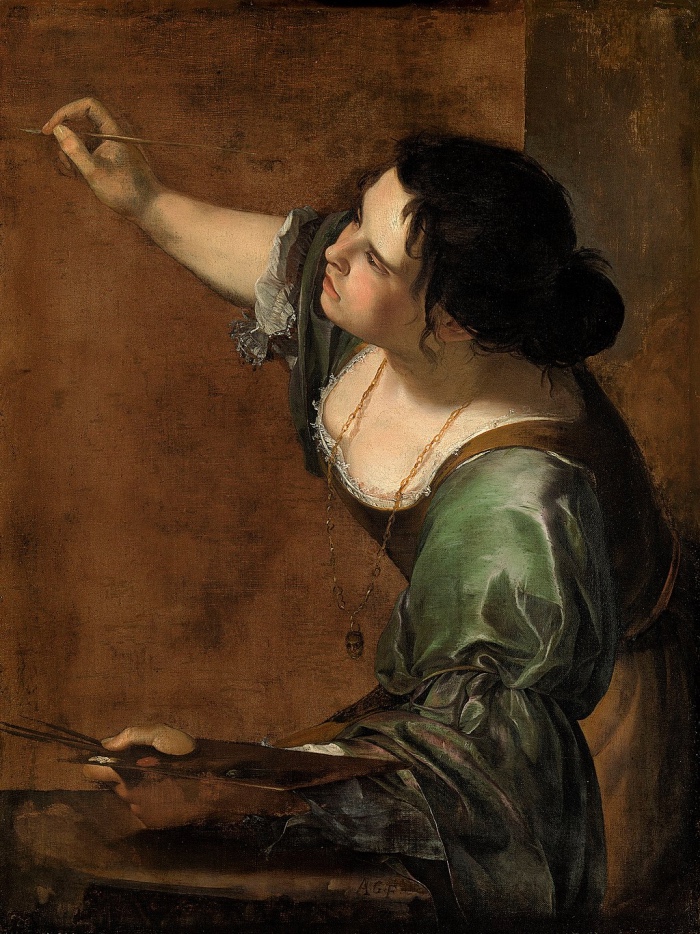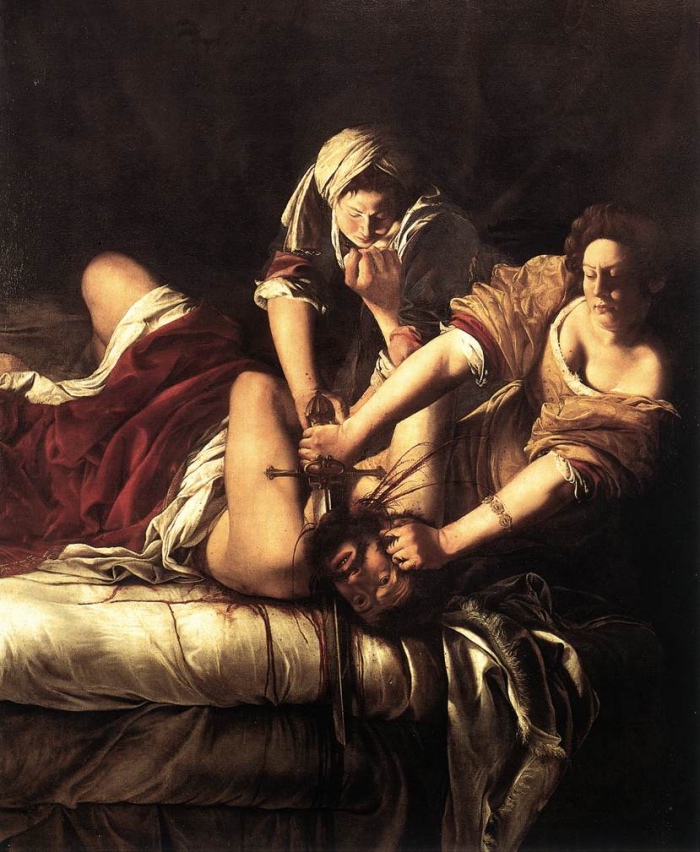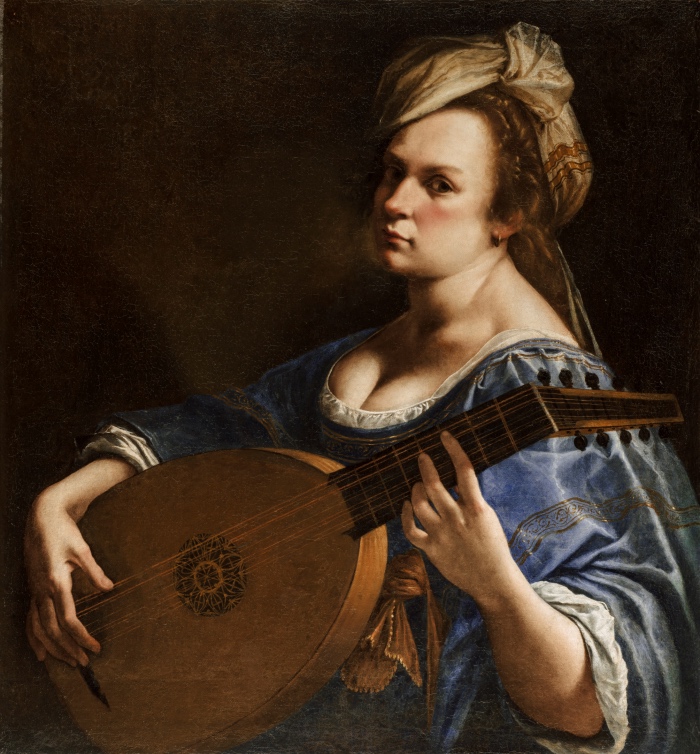
LIFE OF ARTEMISIA GENTILESCHI: 5 THINGS TO KNOW
For a long time Artemisia Gentileschi was mentioned in art history books because she was the protagonist of a trial for sexual assault of which she was the victim. An event that for a long time overshadowed her talent.
Still, Artemisia was a very important painter, sought-after and accepted by the artistic community of the 16th century, like a man.
In this post I’ll tell you the life of Artemisia in five points, to know the woman and especially the artist.
Life of Artemisia Gentileschi in 5 points

Artemisia Gentileschi, Judith Slaying Holofernes
1. BIRTH AND ARTISTIC TRAINING OF ARTEMISIA GENTILESCHI
Artemisia Gentileschi was born on July 8th 1593 in Rome.
Her father Orazio was an important painter and his house was frequented by artists, intellectuals and prominent figures of the Roman culture at that time.
Since she was a child Artemisia showed an extraordinary talent and Orazio became her master, because she was a woman and didn’t have any possibility to train as an artist unless she became a pupil of his father.
2. ARTEMISIA GENTILESCHI’S RAPE AND THE TRIAL
In 1611 her father decided to entrust Agostino Tassi, a painter and a friend of him, who was a master of perspective, with developing Artemisia’s talent. He, however, raped young Artemisia.
The event ended in a famous trial and in Tassi’s sentence in 1612, but that disgraced Artemisia and public opinion was divided on the subject.
3. ARTEMISIA’S MARRIAGE AND HER WORK AS AN ARTIST
To protect Artemisia’s reputation, her father arranged a shotgun marriage with painter Pierantonio Stiattesi and the spouses immediately moved to Florence. This way the artist could put a painful event behind.
In Florence Artemisia Gentileschi was introduced to Cosimo II de’ Medici’s intellectual circle and got her first important commissions, flaunting her talent as a painter beyond her father’s influence.
4. ARTEMISIA GENTILESCHI’S TRIPS
Despite her success as an artist, the financial situation of her family (in the meantime she had had four children) was disastrous because of her husband’s lifestyle.
For this reason in 1620 Artemisia decided to come back to Rome, and it wasn’t difficult for her to be introduced to the artistic community, beginning working with new patrons and travelling to follow new projects.
She went to Venice, Naples, Turin and even to England.
5. ARTEMISIA GENTILESCHI’S TRIPS
The life of vita Artemisia Gentileschi is one of a kind, because for a woman in the 16th century, dedicating herself to painting was an uncommon choice.
Artemisia was not only financially independent, but she was also a member of a high level cultural context.
Among her supporters and illustrious patrons was also King of Spain Philip IV.
Artemisia Gentileschi died in Naples in 1654 at the age of 61.

Artemisia Gentileschi, Self-Portrait as a Lute Player, 1617-18 ca. Oil on canvas, 65,5×50,2 cm Hartford, Wadsworth Atheneum Museum of Art CT, Charles H. Schwartz Endowment Fund ©Allen Phillips/Wadsworth Atheneum. The work will be on display until February.
READ ALSO – Caravaggio: the paintings by Michelangelo Merisi

